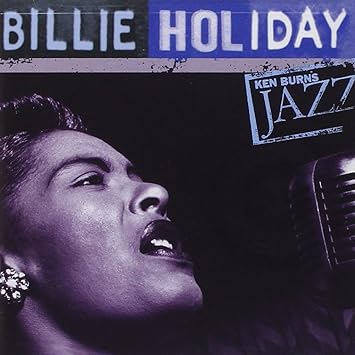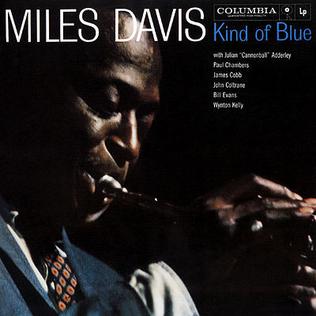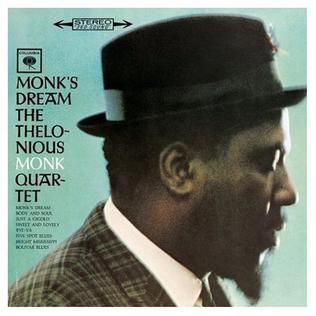
From Britannica Library Reference Center:
In the early decades of the 20th century the word jazz was used to mean most kinds of American popular and dance music. Since the 1920s, however, jazz has usually signified a tradition in Afro-American music that began as a folk music in the South and developed gradually into a sophisticated modern art. While classical and rock music have often borrowed features of jazz, they remain outside the jazz tradition.
Any attempt to arrive at a precise, all-encompassing definition of jazz is probably futile. Jazz has been, from its very beginnings at the turn of the 20th century, a constantly evolving, expanding, changing music, passing through several distinctive phases of development; a definition that might apply to one phase—for instance, to New Orleans style or swing—becomes inappropriate when applied to another segment of its history, say, to free jazz. Early attempts to define jazz as a music whose chief characteristic was improvisation, for example, turned out to be too restrictive and largely untrue, since composition, arrangement, and ensemble have also been essential components of jazz for most of its history. Similarly, syncopation and swing, often considered essential and unique to jazz, are in fact lacking in much authentic jazz, whether of the 1920s or of later decades. Again, the long-held notion that swing could not occur without syncopation was roundly disproved when trumpeters Louis Armstrong and Bunny Berigan (among others) frequently generated enormous swing while playing repeated, unsyncopated quarter notes.
Jazz, in fact, is not—and never has been—an entirely composed, predetermined music, nor is it an entirely extemporized one. For almost all of its history it has employed both creative approaches in varying degrees and endless permutations. And yet, despite these diverse terminological confusions, jazz seems to be instantly recognized and distinguished as something separate from all other forms of musical expression. To repeat Armstrong’s famous reply when asked what swing meant: “If you have to ask, you’ll never know.” To add to the confusion, there often have been seemingly unbridgeable perceptual differences between the producers of jazz (performers, composers, and arrangers) and its audiences. For example, with the arrival of free jazz and other latter-day, avant-garde manifestations, many senior musicians maintained that music that didn’t swing was not jazz.
Most early classical composers (such as Aaron Copland, John Alden Carpenter—and even Igor Stravinsky, who became smitten with jazz) were drawn to its instrumental sounds and timbres, the unusual effects and inflections of jazz playing (brass mutes, glissandos, scoops, bends, and stringless ensembles), and its syncopations, completely ignoring, or at least underappreciating, the extemporized aspects of jazz. Indeed, the sounds that jazz musicians make on their instruments—the way they attack, inflect, release, embellish, and colour notes—characterize jazz playing to such an extent that if a classical piece were played by jazz musicians in their idiomatic phrasings, it would in all likelihood be called jazz.
Nonetheless, one important aspect of jazz clearly does distinguish it from other traditional musical areas, especially from classical music: the jazz performer is primarily or wholly a creative, improvising composer—his own composer, as it were—whereas in classical music the performer typically expresses and interprets someone else’s composition.
The elements that make jazz distinctive derive primarily from West African musical sources as taken to the North American continent by slaves, who partially preserved them against all odds in the plantation culture of the American South. These elements are not precisely identifiable because they were not documented—at least not until the mid- to late 19th century, and then only sparsely. Furthermore, black slaves came from diverse West African tribal cultures with distinct musical traditions. Thus, a great variety of black musical sensibilities were assembled on American soil. These in turn rather quickly encountered European musical elements—for example, simple dance and entertainment musics and shape-note hymn tunes, such as were prevalent in early 19th-century North America.
The music that eventually became jazz evolved out of a wide-ranging, gradually assimilated mixture of black and white folk musics and popular styles, with roots in both West Africa and Europe. It is only a slight oversimplification to assert that the rhythmic and structural elements of jazz, as well as some aspects of its customary instrumentation (e.g., banjo or guitar and percussion), derive primarily from West African traditions, whereas the European influences can be heard not only in the harmonic language of jazz but in its use of such conventional instruments as trumpet, trombone, saxophone, string bass, and piano.
The syncopations of jazz were not entirely new—they had been the central attraction of one of its forerunners, ragtime, and could be heard even earlier in minstrel music and in the work of Creole composer Louis Moreau Gottschalk (Bamboula, subtitled Danse des Nègres, 1844–45, and Ojos Criollos, 1859, among others). Nevertheless, jazz syncopation struck nonblack listeners as fascinating and novel, because that particular type of syncopation was not present in European classical music. The syncopations in ragtime and jazz were, in fact, the result of reducing and simplifying (over a period of at least a century) the complex, multilayered, polyrhythmic, and polymetric designs indigenous to all kinds of West African ritual dance and ensemble music. In other words, the former accentuations of multiple vertically competing metres were drastically simplified to syncopated accents.
The provenance of melody (tune, theme, motive, riff) in jazz is more obscure. In all likelihood, jazz melody evolved out of a simplified residue and mixture of African and European vocal materials intuitively developed by slaves in the United States in the 1700s and 1800s—for example, unaccompanied field hollers and work songs associated with the changed social conditions of blacks. The widely prevalent emphasis on pentatonic formations came primarily from West Africa, whereas the diatonic (and later more chromatic) melodic lines of jazz grew from late 19th- and early 20th-century European antecedents.
Harmony was probably the last aspect of European music to be absorbed by blacks. But once acquired, harmony was applied as an additional musical resource to religious texts; one result was the gradual development of spirituals, borrowing from the white religious revival meetings that African Americans in many parts of the South were urged to attend. One crucial outcome of these musical acculturations was the development by blacks of the so-called blues scale, with its “blue notes”—the flatted third and seventh degrees. This scale is neither particularly African nor particularly European but acquired its peculiar modality from pitch inflections common to any number of West African languages and musical forms. In effect these highly expressive—and in African terms very meaningful—pitch deviations were superimposed on the diatonic scale common to almost all European classical and vernacular music.
That jazz developed uniquely in the United States, not in the Caribbean or in South America (or any other realm to which thousands of African blacks were also transported) is historically fascinating. Many blacks in those other regions were very often emancipated by the early 1800s and thus were free individuals who actively participated in the cultural development of their own countries. In the case of Brazil, blacks were so geographically and socially isolated from the white establishment that they simply were able to retain their own African musical traditions in a virtually pure form. It is thus ironic that jazz would probably never have evolved had it not been for the slave trade as it was practiced specifically in the United States.
Jazz grew from the African American slaves who were prevented from maintaining their native musical traditions and felt the need to substitute some homegrown form of musical expression. Such composers as the Brazilian mulatto José Maurício Nunes Garcia were fully in touch with the musical advances of their time that were developing in Europe and wrote music in those styles and traditions. American slaves, by contrast, were restricted not only in their work conditions and religious observances but in leisure activities, including music making. Although slaves who played such instruments as the violin, horn, and oboe were exploited for their musical talents in such cities as Charleston, South Carolina, these were exceptional situations. By and large the slaves were relegated to picking up whatever little scraps of music were allowed them.
Jazz, as it finally evolved as a distinct musical style and language, comprised what Max Harrison calls, in the New Grove Dictionary of Music and Musicians, a “composite matrix” made up of a host of diverse vernacular elements that happened to come together at different times and in different regions. This matrix included the field hollers of the cotton plantations; the work songs on the railroads, rivers, and levees; hymns and spirituals; music for brass bands, funeral processions, and parades; popular dance music; the long-standing banjo performing tradition (starting in the 1840s), which culminated half a century later in the banjo’s enormous popularity; wisps of European opera, theatre, and concert music; and, of course, the blues and ragtime. These last two forms began to flourish in the late 19th century—blues more as an informal music purveyed mostly by itinerant singers, guitarists, and pianists and ragtime becoming (by 1900) America’s popular entertainment and dance music.
Ragtime differs substantially from jazz in that it was (1) a through-composed, fully notated music intended to be played in more or less the same manner each time, much like classical music, and (2) a music written initially and essentially for the piano. Jazz, by contrast, became a primarily instrumental music, often not notated, and partially or wholly improvised. Ragtime had its own march-derived, four-part form, divided into successive 16-bar sections, whereas jazz, once weaned away from ragtime form, turned to either the 12-bar (or occasionally 8-bar) blues or the 32-bar song forms. What the two music genres had in common was their syncopated (thus “irregular”) melodies and themes, placed over a constant “regular” 2/4 or 4/4 accompaniment.
The years from 1905 to 1915 were a time of tremendous upheaval for black musicians. Even the many musicians who had been trained in classical music but had found—as blacks—no employment in that field were now forced to turn to ragtime, which they could at least play in honky-tonks, bordellos, and clubs; many of these musicians eventually drifted into jazz. Hundreds of other musicians, unable to read and write music, nonetheless had great ability to learn it by ear, as well as superior musical talent. Picking up ragtime and dance music by ear (perhaps not precisely), they began almost out of necessity to embellish these syncopated tunes—loosening them up, as it were—until ornamentation spilled over quite naturally into simple improvisation. This process took on a significantly increased momentum once the piano rags of such master composers as Scott Joplin, Joseph Lamb, and James Scott appeared in arrangements performed regularly by bands and orchestras.
That the pianist-composer Jelly Roll Morton was a braggart who claimed to be “the inventor of jazz” should not obscure his major role in the development of that music. As early as 1902 Morton played ragtime piano in the vaunted bordellos of Storyville, New Orleans’s famous red-light district. Later he began working as an itinerant musician, crisscrossing the South several times and eventually working his way to Los Angeles, where he was based for several years. As the first major composer of jazz, Morton seems to have assimilated (like a master chef making a great New Orleans bouillabaisse) most of the above-mentioned matrix, particularly blues and ragtime, into a single new, distinct, coherent musical style. Others, such as soprano saxophonist Sidney Bechet, trombonist Kid Ory, and cornetists Bunk Johnson and Freddie Keppard—four of the most gifted early jazz musicians—arrived at similar conclusions before 1920.
Johnson and others regarded themselves as ragtime musicians. In truth, in the cases of many musicians of that generation—both black and white—who grew up with ragtime, the listener would be hard put to determine when their playing turned from embellished rags to improvisatory jazz. Musicians confirmed the tenuousness and variety of these early developments in statements such as that of reedman Buster Bailey (speaking of the years before 1920): “I … was embellishing around the melody. At that time [1917–18] I wouldn’t have known what they meant by improvisation. But embellishment was a phrase I understood.” And reedman Garvin Bushell said, “We didn’t call the music jazz when I was growing up [in Springfield, Ohio].… Ragtime piano was the major influence in that section of the country.… The change to jazz began around 1912 to 1915.”
Visit the Britannica Library Reference Center to read more!
 Billie Holiday: Ken Burns Jazz by
Billie Holiday: Ken Burns Jazz by  Live In Time by
Live In Time by  The Best of Duke Ellington by
The Best of Duke Ellington by  Giant Steps by
Giant Steps by  Kind of Blue by
Kind of Blue by  Emily's D+evolution by
Emily's D+evolution by  Monk's Dream by
Monk's Dream by